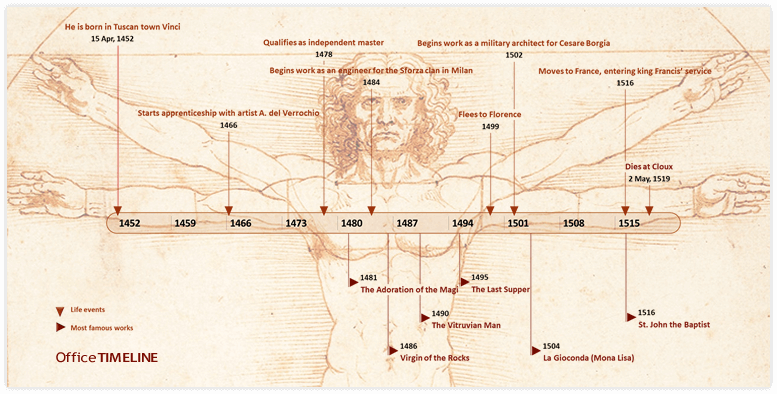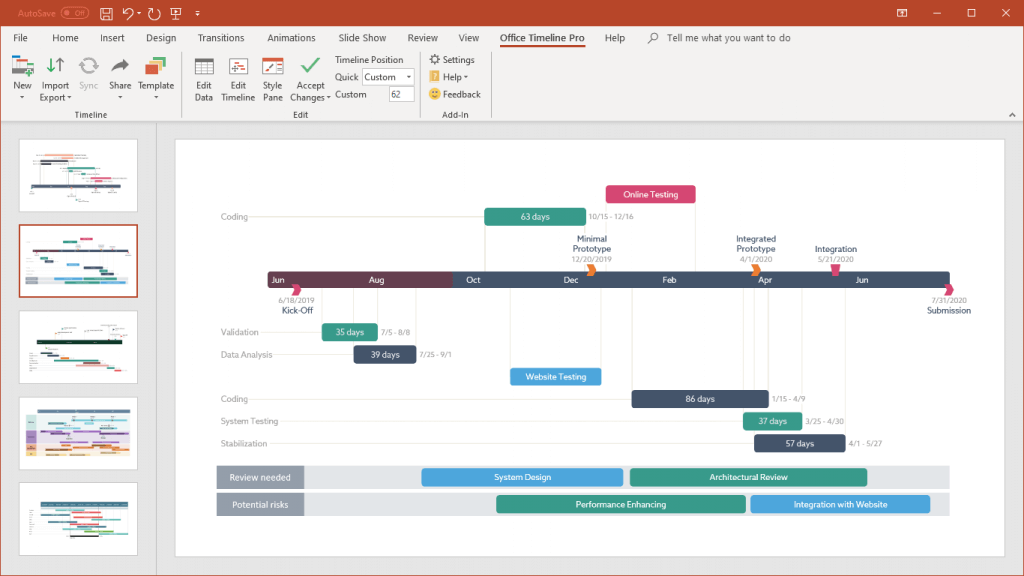
April 15 marks the birth date of Italian polymath of the Renaissance era Leonardo da Vinci. Best known today as one of the greatest painters in the history of art, with The Last Supper and Mona Lisa as his most famous works, he was also an architect, engineer and inventor. An avid and self-educated explorer of many other areas of interest such as music, anatomy, botany, geology and cartography, he is widely regarded as the epitome of the Renaissance Man or the Universal Genius. It is because of this abundance of diverse pursuits that his artistic output was quite small. However, recent research on his work has raised awareness and admiration for him as a scientist and humanist as well.
To celebrate the visionary mind whom some historians consider as one of the most multi-talented individuals to have ever lived, we created the Leonardo da Vinci Timeline, which overviews his life and most famous paintings, as his overall legacy is yet to be unraveled.
For da Vinci, art was inextricably linked to science and nature, which channeled his curiosity and inventive imagination into filling dozens of notebooks with observations, scientific diagrams and theories about a wide range of subjects. Fusing art and natural philosophy, his eclectic manuscripts are written in mirror-image cursive. Some account secrecy for this style of writing, whereas others think it was more of a practical expediency for the left-handed Leonardo. The notebooks, which remained unpublished during his lifetime, are now housed in several museum collections such as the Louvre in Paris, the Biblioteca Ambrosiana in Milan, and the British Library in London.
Encrypting information was a practice that Leonardo used not only for his journals, but for his paintings and drawings as well. All of his famous works include detailed elements of geometry and anatomy. This feature, along with innovative painting techniques, subtle gradation of tone and rendering of human emotions, made his work unique and reproduced by generations of artists.
Even half a millennium after his death, Leonardo da Vinci continues to fascinate art critics and scholars. In November 2017, a recently discovered painting attributed to him, Salvador Mundi, was sold for the world record sum of $450.3 million.
The Leonardo da Vinci chronology was designed with Office Timeline, a simple to use PowerPoint add-in that helps you easily create professional-looking timelines, project plans and other similar visuals. The slide, which can be copied and shared for free, is easily editable using the Pro version of the tool.
Download the Da Vinci Timeline here.

Turn project data into professional timelines
Get the advanced features of Office Timeline Pro+ free for 14 days.
Get free trial